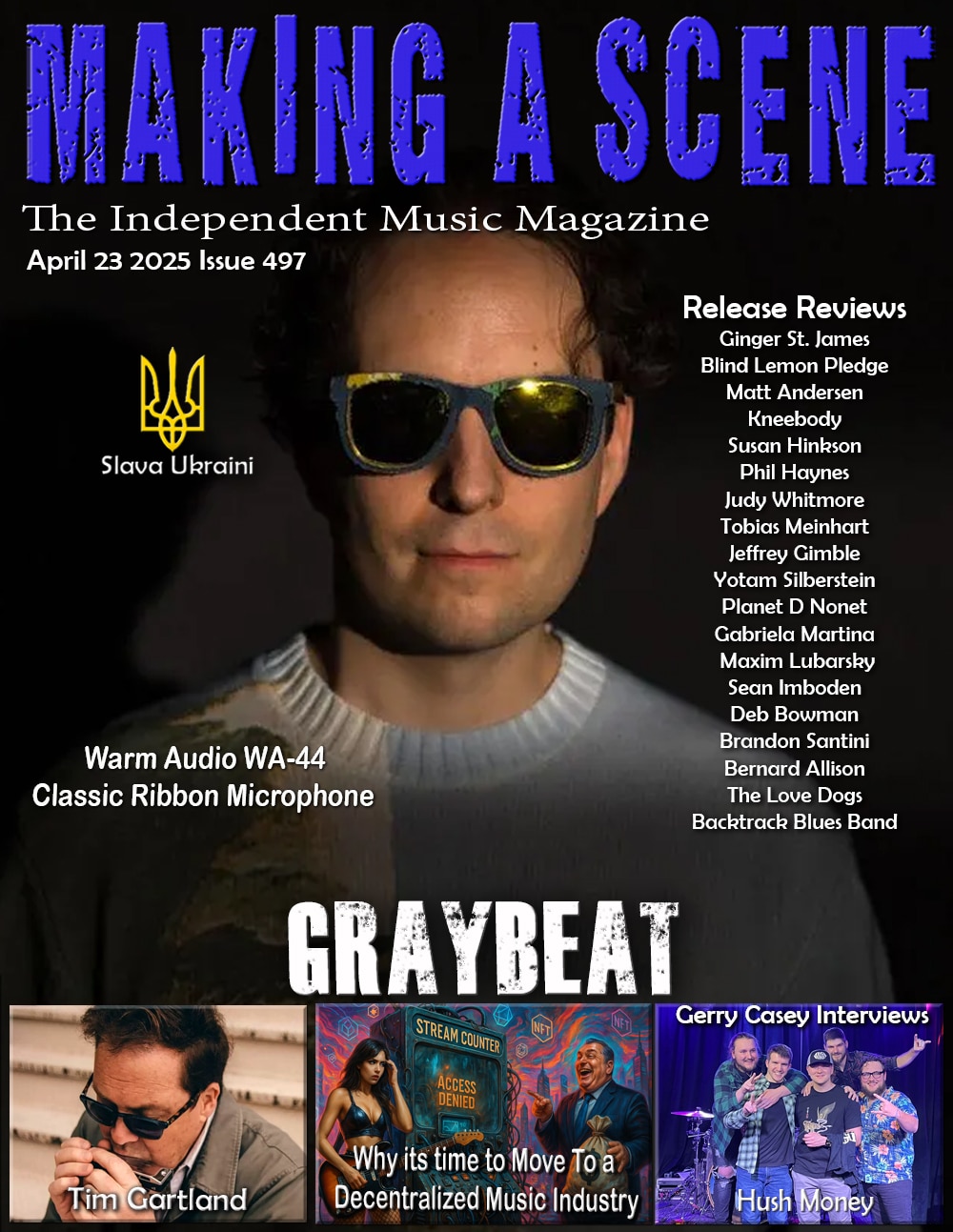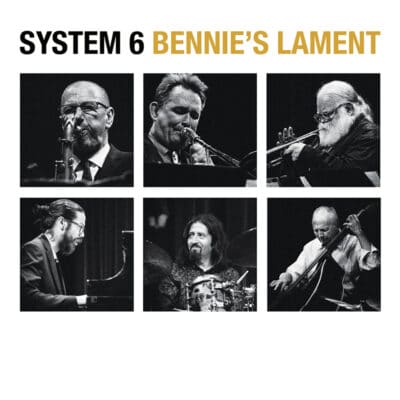Benn Clatworthy & System 6 Bennie’s Lament
Benn Clatworthy & System 6
Bennie’s Lament
Skipper Productions
London-bred and Los Angeles-based saxophonist Benn Clatworthy has been a fixture on the Los Angeles jazz scene since 1980. Clatworthy was originally heavily influenced by late-’50s John Coltrane, but would soften his tone and sometimes sound a little like Warne Marsh with touches of Sonny Rollins. He debuted in 1990 with Thanks Horace (which also features pianist Cecilia Coleman) and, in 1995, released While My Lady Sleeps on his own label (featuring Cedar Walton as a guest). Clatworthy has led various incarnations of System 6 over the past decade, and Bennie’s Lament is the second recording with this group of SoCal’s finest instrumentalists. The rhythm section of Yayo Morales on drums, Bruce Lett on bass and Bryan Velasco on piano is stout yet nimble. Clatworthy plays the woodwinds— tenor, and soprano saxophones as well as clarinet, bass clarinet, flute, and alto flute—and Ron Stout and Joey Sellers round out the front line on trumpet and trombone, respectively. Note that Clatworthy has a UK-based unit as well, having released The Pursuit with them earlier this year.
Clatworthy penned nine of the album’s 11 original compositions, with Sellers and Morales each contributing a tune apiece. According to Clatworthy the music, marked by much ensemble work, is a “search for beauty.” Perhaps the tune that speaks best to this is the record’s closer, “The Pursuit.” Clatworthy jumps right in, using his tenor saxophone to issue a strident, almost pleading call into the deep. Playful call-and-response ensues, with Stout and Sellers sounding brawny yet beautifully layered in answering the leader’s siren call, before Clatworthy steps forward to speak several revelatory runs of exaltation. If this tune appeared on the UK album, it’s not surprising that the album was hailed with much acclaim.
Two stretched out tunes begin the proceedings. The opening “The Decider,” is festive with hard-charging rumba rhythms before sliding into an elegantly controlled rubato. As the tempo slows, Clatworthy’s soprano sax pierces like a stab of brilliant sunlight, and, gradually, out of orchestrated storminess, the tune re-emerges on the other side as a fast swing before ending much the same way as it begins. Next is “How They Talk,” a tune inspired by the cadence and speech patterns of cable news’ talking heads. Morales’s percussive entrance presents like an unceasing, metronome-like cog in a fully automated assembly line—like the cable news programs, it’s at times there in the foreground, at times there in the background, and like the 24-hour news cycle, it never stops. . Sellers, Lett, and Velasco all solo memorably across the track’s straight-ahead middle before Morales shepherds the group back to the evocative dissonances to which the listener was introduced eight minutes prior.
“Terry Briggs,” a noirish ballad with an air of mystery, was written for Clatworthy’s late friend Terry Briggs, a singer known to sing in the style of Johnny Hartman whose jazz club in Santa Barbara was a regular hit for SoCal musicians. While “Pelican Plus One” is a moody, time-alternating reflection on, what else, the predatory habits of pelicans, the “plus one” refers to his frequent guest the seagull. The body of the tune is written in 9/4, while the bridge is in a double time 4/4 highlighted by Lett’s bouncy walking basslines.
“Two Little Brothers” is a vibrantly playful musical portrait of Morales’s two young sons with an extended drum solo from dad, proving that fun has no age limits. The title track, is, as you likely guessed, is an homage to John Coltrane’s “Lonnie’s Lament,” a tune Clatworthy had admired and played in clubs for years and serves as the recording’s centerpiece. Clatworthy and band play this tribute in 6/8—that’s how Clatworthy has always played the masterpiece, at a quicker tempo but Trane’s musical and emotional strains in Clatworthy’s tenor is unmistakable. Meanwhile, Sellers’s “Good Grape” is meant to honor red wine, highlighted by those low tones of Clatworthy’s bass clarinet.
“No Collusion,” another Clatworthy original, is an E-flat blues inspired by the current US president and his penchant for prevarication. Looking for someone to believe in, Clatworthy taps Sellers, his trusty trombonist, who solos through the swinging middle and charges through each restatement of the tune’s theme “Sign of the Times” is another metaphor for our contemporary civic discourse, a fast driver with, in a true sign of the times, no clear tonal center.
The penultimate tune is “In Strayhorn’s Bag.” A tribute to the brilliant composer and arranger Duke Ellington once called “my right arm, left arm, and all the eyes in the back of my head,” it gives pianist Bryan Velasco an earned spotlight and Clatworthy a rare chance to stretch out on a ballad on this mostly mid-to-uptempo recording. He and Velasco have earned it because System 6 is a truly democratic unit in the best sense of jazz ensemble playing.
- Jim Hynes
Discover more from Making A Scene!
Subscribe to get the latest posts sent to your email.














































